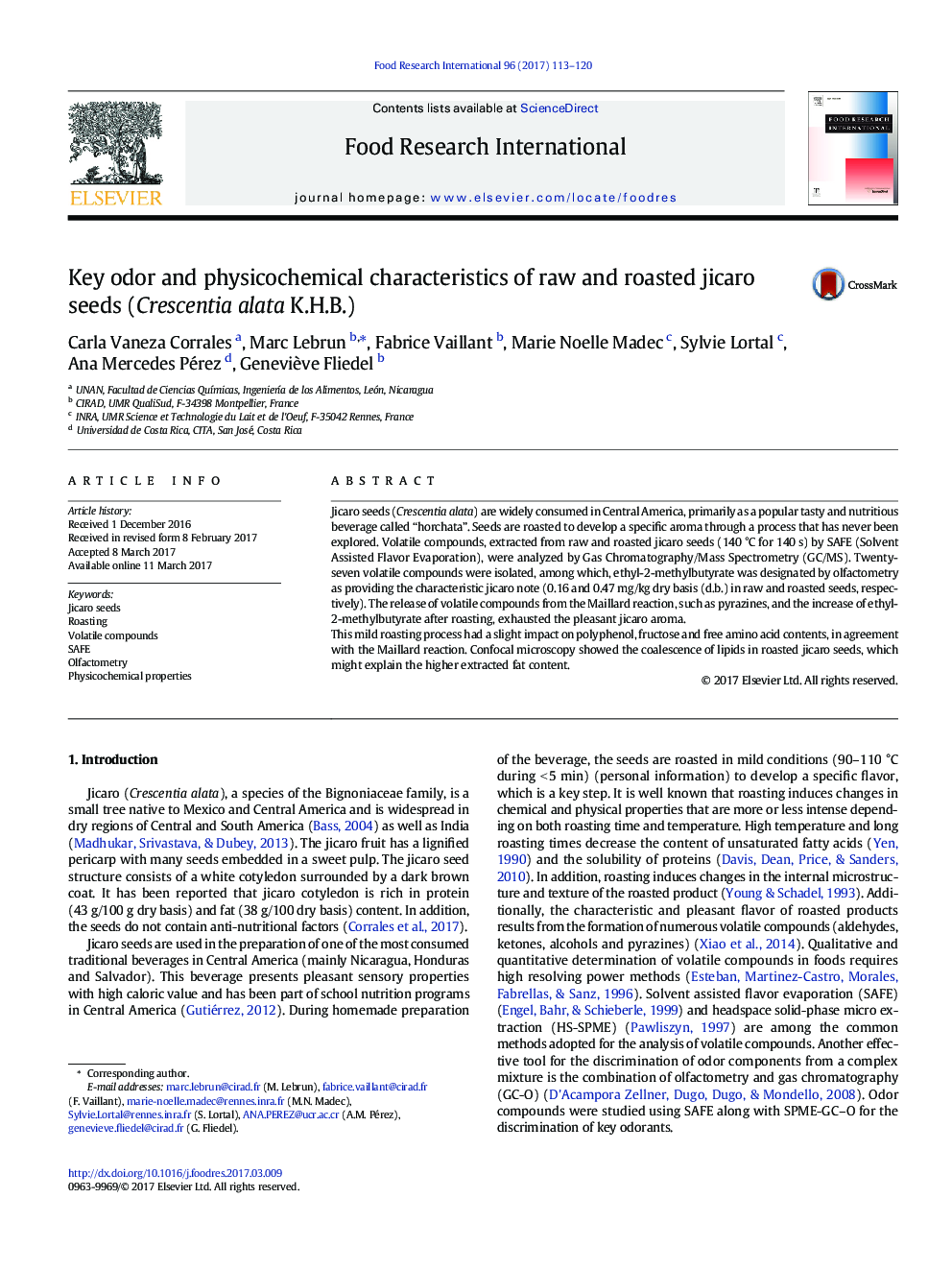| Article ID | Journal | Published Year | Pages | File Type |
|---|---|---|---|---|
| 5768261 | Food Research International | 2017 | 8 Pages |
â¢Twenty-seven volatile compounds were identified in raw and roasted jicaro seeds.â¢Mild roasting enhanced the release of ethyl-2-methylbutyrate and pyrazines.â¢Ethyl-2-methylbutyrate was identified as the key odor compound of jicaro seed.â¢Roasting lead to the coalescence of oil bodies and denaturation of protein bodies.â¢SAFE, GC/MS and SPME/ODP were used to characterize volatile compounds of the seeds.
Jicaro seeds (Crescentia alata) are widely consumed in Central America, primarily as a popular tasty and nutritious beverage called “horchata”. Seeds are roasted to develop a specific aroma through a process that has never been explored. Volatile compounds, extracted from raw and roasted jicaro seeds (140 °C for 140 s) by SAFE (Solvent Assisted Flavor Evaporation), were analyzed by Gas Chromatography/Mass Spectrometry (GC/MS). Twenty-seven volatile compounds were isolated, among which, ethyl-2-methylbutyrate was designated by olfactometry as providing the characteristic jicaro note (0.16 and 0.47 mg/kg dry basis (d.b.) in raw and roasted seeds, respectively). The release of volatile compounds from the Maillard reaction, such as pyrazines, and the increase of ethyl-2-methylbutyrate after roasting, exhausted the pleasant jicaro aroma.This mild roasting process had a slight impact on polyphenol, fructose and free amino acid contents, in agreement with the Maillard reaction. Confocal microscopy showed the coalescence of lipids in roasted jicaro seeds, which might explain the higher extracted fat content.
Graphical abstractDownload high-res image (232KB)Download full-size image
